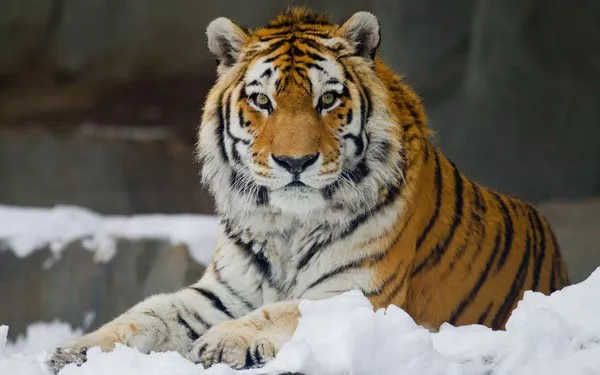The world of felids is as diverse as it is captivating, boasting a wide array of species, each with its own unique characteristics and behaviors. Among these majestic creatures, some stand out for their sheer size and power, earning them the title of the largest cat species on Earth. From the iconic Siberian tiger to the lesser-known clouded leopard, these magnificent felines inspire awe and admiration in equal measure.
In this comprehensive exploration, we delve into the lives, habitats, and conservation status of the largest cat species, shedding light on their importance in the delicate balance of ecosystems worldwide.
Introduction to the Largest Cat Species
The term “big cat” typically conjures images of lions, tigers, and leopards prowling the savannahs and jungles of Africa and Asia. While these charismatic predators certainly deserve their place in the spotlight, there are other lesser-known species that rival them in size and stature.
The largest cat species in the world include the following:
- Siberian Tiger (Panthera tigris altaica)
- Bengal Tiger (Panthera tigris tigris)
- African Lion (Panthera leo)
- Jaguar (Panthera onca)
- Cougar (Puma concolor)
- Leopard (Panthera pardus)
- Clouded Leopard (Neofelis nebulosa)
Each of these remarkable felines possesses its own unique adaptations and behaviors, allowing them to thrive in a variety of habitats, from dense rainforests to frigid mountain ranges.
Top 7 Largest Cat Species on Earth
1. Siberian Tiger (Panthera tigris altaica)
The Siberian tiger, also known as the Amur tiger, is the largest of all tiger subspecies and holds the title of the largest cat species in the world. Native to the forests of eastern Russia, the Siberian tiger is renowned for its massive size and impressive strength.
Male Siberian tigers can weigh up to 660 pounds (300 kilograms) and measure over 10 feet (3 meters) in length, including their tail. Females are slightly smaller but still formidable predators in their own right. With their thick fur coats and stocky build, Siberian tigers are well-adapted to the harsh winters of their native habitat.
Despite their imposing size, Siberian tigers are elusive creatures, preferring to avoid human contact whenever possible. They are solitary hunters, stalking their prey with stealth and precision before delivering a lethal ambush. Their diet consists primarily of deer, wild boar, and occasionally smaller mammals such as rabbits and fish.
2. Bengal Tiger (Panthera tigris tigris)
The Bengal tiger, native to the Indian subcontinent, is another formidable member of the cat family and one of the largest cat species in the world. With its striking orange coat adorned with black stripes, the Bengal tiger is an iconic symbol of strength and power.
Male Bengal tigers can weigh up to 550 pounds (250 kilograms) and measure over 9 feet (2.7 meters) in length, making them one of the largest tiger subspecies. Females are smaller but no less formidable, often weighing around 300 pounds (136 kilograms).
Bengal tigers inhabit a variety of habitats, including dense forests, mangrove swamps, and grasslands. They are highly adaptable predators, capable of hunting a wide range of prey, from deer and wild boar to smaller animals such as monkeys and birds.
Unfortunately, Bengal tigers are also one of the most endangered big cat species, with habitat loss, poaching, and human-wildlife conflict posing significant threats to their survival. Conservation efforts are underway to protect remaining populations and ensure a future for these magnificent creatures.
3. African Lion (Panthera leo)
The African lion, often referred to as the “king of the jungle,” is the largest cat species in Africa and one of the most iconic predators on the planet. With its golden coat and majestic mane, the African lion commands respect and admiration from all who encounter it.
Male African lions can weigh up to 550 pounds (250 kilograms) and measure over 8 feet (2.5 meters) in length, while females are smaller but no less formidable. Lions are highly social animals, living in prides consisting of multiple females, their offspring, and a coalition of dominant males.
African lions inhabit a wide range of habitats, from savannahs and grasslands to scrub forests and semi-desert regions. They are opportunistic hunters, preying primarily on large herbivores such as zebras, wildebeests, and buffalo.
Despite their status as apex predators, African lions face numerous threats, including habitat loss, human-wildlife conflict, and poaching. Conservation efforts are critical to ensuring the survival of these iconic big cats for future generations.
4. Jaguar (Panthera onca)
The jaguar, native to the Americas, is the largest cat species in the New World and the third-largest overall. With its powerful build and distinctive rosette-patterned coat, the jaguar is a formidable predator in its native habitat.
Male jaguars can weigh up to 250 pounds (113kilograms) and measure over 6 feet (1.8 meters) in length, while females are generally smaller. Jaguars are solitary hunters, stalking their prey with stealth and ambush tactics.
Jaguars are apex predators, capable of taking down a wide range of prey, including deer, tapirs, and caimans. They are also skilled climbers and swimmers, making them highly adaptable predators in their dense rainforest habitat.
Despite their formidable reputation, jaguars face numerous threats, including habitat loss, poaching, and conflict with humans. Conservation efforts are underway to protect remaining jaguar populations and preserve their vital role in maintaining ecosystem health.
5. Cougar (Puma concolor)
The cougar, also known as the mountain lion or puma, is the largest cat species in North America and the fourth-largest overall. Despite its size and power, the cougar is often overlooked compared to its larger counterparts.
Male cougars can weigh up to 220 pounds (100 kilograms) and measure over 8 feet (2.4 meters) in length, while females are generally smaller. Cougars inhabit a wide range of habitats, from mountains and forests to deserts and swamps.
Cougars are solitary hunters, stalking their prey with stealth and ambush tactics. They are opportunistic feeders, preying primarily on deer, elk, and smaller mammals such as rabbits and rodents.
Despite their adaptability and resilience, cougars face numerous threats, including habitat loss, poaching, and conflict with humans. Conservation efforts are underway to protect remaining cougar populations and ensure their long-term survival.
6. Leopard (Panthera pardus)
The leopard is one of the most adaptable and widespread big cat species, found across sub-Saharan Africa and parts of Asia. With its distinctive rosette-patterned coat and stealthy hunting tactics, the leopard is a formidable predator in its native habitat.
Male leopards can weigh up to 200 pounds (91 kilograms) and measure over 6 feet (1.8 meters) in length, while females are generally smaller. Leopards are solitary hunters, stalking their prey with stealth and precision before delivering a lethal ambush.
Leopards are opportunistic feeders, preying on a wide range of animals, including deer, monkeys, and smaller mammals such as rodents and birds. They are also skilled climbers and often drag their prey up into trees to protect it from scavengers.
Despite their adaptability and resilience, leopards face numerous threats, including habitat loss, poaching, and conflict with humans. Conservation efforts are critical to protecting remaining leopard populations and preserving their vital role in ecosystem health.
7. Clouded Leopard (Neofelis nebulosa)
The clouded leopard is one of the most elusive and enigmatic big cat species, found primarily in the dense forests of Southeast Asia. With its striking coat pattern and arboreal lifestyle, the clouded leopard is a true marvel of nature.
Male clouded leopards can weigh up to 50 pounds (23 kilograms) and measure over 4 feet (1.2 meters) in length, while females are generally smaller. Clouded leopards are skilled climbers, often using their powerful limbs and long tails to navigate the forest canopy with ease.
Despite their elusive nature, clouded leopards are threatened by habitat loss, poaching, and human-wildlife conflict. Conservation efforts are underway to protect remaining clouded leopard populations and ensure their long-term survival.
See also: 20 Cutest Animals In The World
Conclusion
The largest cat species in the world are not only impressive in size and stature but also play a vital role in maintaining the health and balance of ecosystems worldwide. From the iconic Siberian tiger to the lesser-known clouded leopard, each of these magnificent felines embodies the beauty and power of the natural world.
However, many of these species face numerous threats, including habitat loss, poaching, and conflict with humans. Conservation efforts are critical to protecting remaining populations and ensuring their long-term survival.
By raising awareness and supporting conservation initiatives, we can help safeguard the future of these iconic big cats for generations to come. Together, we can ensure that these majestic creatures continue to roam the wilds of our planet for years to come.
You Might Be Interested In:











![10 Most Richest Cities in the United States [Revealed!]](https://www.validdownloads.com/wp-content/uploads/2023/12/Bengal-Tiger.webp)











